It has been confirmed that replacements for 32 (The Royal) Squadron BAE 146 aircraft are being considered.
Gareth Thomas, Member of Parliament for Harrow West, asked via a written question:
“To ask the Secretary of State for Defence, when the four BAe 146 aircraft based at RAF Northolt will be retired from service; when replacements for those aircraft will be procured; how many such replacements will be procured; how much funding from the public purse has been allocated to replacing those aircraft; and whether the RAF Voyager ZZ336 will be used for short haul trips previously undertaken by those aircraft.”
James Heappey, the Parliamentary Under-Secretary of State for Defence Procurement, responded:
“The current fleet of four BAe 146 aircraft are planned to be retired from Service on 31 March 2022. Replacements for those aircraft are currently under consideration as part of normal capability planning. The fleet of 14 Voyager will continue to support the collective Air Transport task including VIP and Command Support Air Transport tasking.”
Last year, we reported that the future of 32 (The Royal) Squadron was left in doubt when it was revealed that the RAF was looking to sell off its BAE 146 transport fleet.
The aircraft primarily used to transport the Royal Family and other VIPs.
It is rumoured that the BAE 146 transport fleet will be replaced with “Global 5000 series aircraft or similar”.
The Global 5000 was launched in February 2002. It can carry between 8 and 19 passengers. The firm say there is an optional private room aft and the galley has room to prepare 16 five-course meals.
The jet was priced at $40 million in 2008, it has forward and aft lavatories. I’ll save you more specs, it’s a private jet, you get the idea.



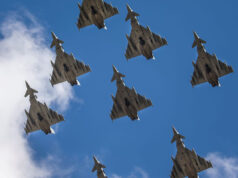

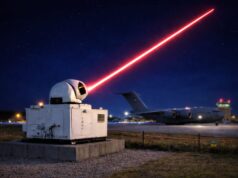
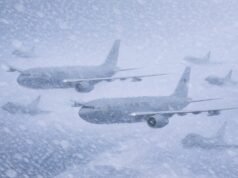
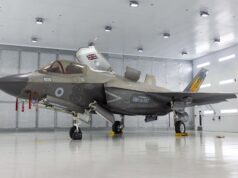
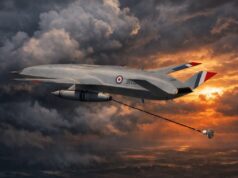





Is this built in NI?
It is assembled in Toronto Canada, the nacelles, horizontal stabiliser and forward fuselage are made in Belfast.
Global 5000…Canadian co. How appropriate for moving members of the Royal family around!!.
I was just about to say the same thing…how about one permanently based in Vancouver?
Closure of RAF Northolt now?
No, RAF Northolt is well placed for London air defence (such as during the Olympics), has a large number of relatively modern facilities, is well placed for its VIP transport role, and actually makes a profit for the RAF due to the high number of business jets that use it.
This. The place was expanded under project MODEL taking in several lodger units from elsewhere. Even if flying ceased the station remains.
Makes no sense with the money spent on it. And would incur costs in finding new homes for its many units.
A useful asset best left alone.
And an OM that is at the nicer end of both quite falling to bits’. And should be a base for a southern QRA flight!
Not quite*
Christ that reminds me of Wittering’s old Officers Mess.
everybody knows that as soon as the MOD spends millions on somewhere its due to close down why are you being so naive?
“as soon as the MOD spends millions on somewhere”
No, as this has been happening since 2002, so not “as soon.”
“why are you being so naive?”
Not at all, just well informed. How is that naive? Where has it been announced RAF Northolt is closing? Not just the runway but the entire station?
The DMC relocated from Mill Hill in 2007, 13 years ago. QCS came from Uxbridge in 2010, the elements from Bentley Priory in 2008.
For info
https://en.wikipedia.org/wiki/Project_MoDEL
If the station then closes the lodger units, which at a quick count in my head number over a dozen, need relocating somewhere. This costs money.
Yes, but the Global 5000 is being replaced by an improved model, the Global 5500 that costs $46 million each. The new RR Pearl engines improve economy by 13%.
isn’t the 5500 part of the 5000 series? 😉
Either the 6000 or 5000 make sense as they have both had countermeasure systems installed and tested for military versions. That saves a lot of money.
Heaven forbid the Royals fly commercial with the peasants. haha
It’s not just the Royal Family who use them.
Hi Dan,
I was just watching a news segment on the Royal Family yesterday on Sky News titled “Why Does Britain Still Have a Royal Family?”.
According to their numbers; the Royals cost the British tax payers about 67 million pounds per year, but The Firm helps bring in approximately 1.8 billion pounds a year to the country.
Her Majesty has dedicated her entire life to the country. This wonderful lady is 93 years old and still works. I think she is owed a couple of new aircraft…
My $0.02 as a traitorous colonial. 😉
It should also be pointed out that the monarchy forgoes its rights to monies created by the crown estates that it technically owns, and is paid out of this.
The crown estates also make a profit whilst ensuring some of the most important buildings, land and other assets are maintained for the nation.
All in all we get a good deal out of the Royal family.
Lets also not forget the fact that the monarchy has been a bit of a balancer over the last 5 years of political madness as well.
For me it works on many levels
The taxpayer does not pay for the royal family. The royal family financed itself until 1760 out of profits from the crown estate. Problem was the crown estate income was variable, so George 111 bartered this to the state in return for a regular government stipend. For several decades the British taxpayer had come out ahead in this arrangement. In 2012 the civil list was abolished and the royal family receive a % of crown estate profits
RonH2996
As a proud monarchist, bloody well said sir!
makes sense to me….why they didnt swap to biz jets years ago is a mystery to me
Hmm, 5200nmi range for the 5000, 5700nmi if they buy the 5500.
That can get it from Northolt all the way to Hanoi, Tokyo or the whole continental USA (Global 5000) or with the Global 5500, all the way to Asunción (the capital of Paraguay) or La Paz. This could potentially mean refitting the VIP Voyager for standard duties, as the dedicated aircraft will be able to do the job. The only reason to keep a VIP Voyager would be for large numbers of staff to go, but as far as I’m concerned they can go commercial, get a regular Voyager, or get a charter aircraft. Give it AAR capability, and it’ll be able to get anywhere on the planet with 1 or 2 refills. Plus it means a potential excuse to keep Sentinel around.
I honestly can’t see a downside. More efficient, better range, and faster than the 146, and more in keeping with presenting an image of a modern Britain. Give it the same livery as the current ones (or better yet, the old one with the red wings), and it’ll do an excellent job of showing presence at important international events. Certainly a better job than a knackered old 146 or a boring Voyager.
Great and why don’t the billionaire royal family pay for them.
Bombardier recently revised upwards the range of the Global 5500 to 5900 nm (10927 km).
About time, they were old when I left 20 years ago! Do we still need a replacement other than civil hire?
They could just buy one 5000 and take a dry lease on another for when it’s U/S and in maintenance. Why have we four 146’s?
Meant to add this link above…
https://www.youtube.com/watch?v=EWk-0X48-dw
2 of the 146’s are mixed passenger/cargo variants that were bought secondhand for intra theatre lift in Afghanistan. They’re probably the most useful ones. They’re not getting replaced.
Are you sure? There were 2 146s and 4-5 BAe 125s in the 2000s. Some of the 125s were forward based to Iraq after 2003. The two additional second-hand 146 freighters were bought for Afghasnitan, as you said, and the 125s retired without replacement. I suspect they will go with a whole new fleet, they need more than one for all the tasks where a military specified communications aircraft might be needed, not just for government or other VIP tasks, and the 146s are old and expensive to operate.
I suspect we’ll get a couple of leased (or more hopefully bought and equipped with countermeasures) Global 5000’s or 6000’s as they’re what the Sentinel is based on to replace the 2 x CC.2. Thats all good and well for replacing the VIP 146’s. But I suspect there will be no replacement for the C.3’s. The decision to retain part of the C-130J fleet in addition to the A400 has probably removed some of the need for them in the interim. With the CC.2 gone keeping the C.3 on would be too costly and I can’t see the RAF getting another type in to fill a niche capability when we have enough airlift to spare (and I suspect the C-130 per flight hour cost is probably less).
I should add the ideal would be 3-4 Global 5000’s. That would provide training for flight crews going on to Sentinel, provide a replacement for the long gone 125’s but also remove the need for the Voyager VIP suite, which whilst necessary, probably isn’t needed that often in reality. If we managed to get some Global 5000’s with a decent comms facility onboard that would be the absolute dream.
I like the part about it being part of the normal capability planning. It does seem the planning goes along the lines of, an asset hits it end of service and is pulled, and then and only then do they start thinking replacement, rather than having things nicely lined up.
The problem is systemic. Government does not trust MoD to deliver to a price. There have been many attempts to reform or bypass procurement process, but to little avail. Also we have a clear and present danger in cyberspace, and as this becomes ubiquitous, we have to defend ourselves and that is consuming much more concern and resources than traditional defence expenditure.
Kinda catch-22, the government doesn’t trust the MOD and the MOD doesn’t trust the government to not make sudden cuts / cost movements which it has to work around.
Which has already apparently happened. Dominic Cummings has apparently favoured soft power over military power and so there are already arguments happening…
Its a shame the BAe 146 wing was never updated to the twin engine config that was proposed. BAe completely miss read the commercial aircraft market in my opinion selling up their Airbus stake and discontinuing a very successful regional jet left them almost zero stake in a sector that has grown considerably. The 146 has to have been one of the most versatile airframes developed, from passenger, cargo, military transport, private jet, unprepared strip capability to more recently fire bomber there’s very few aircraft that could be adapted to fit these roles. I believe it was also proposed as a tactical in flight refuelling tanker and a MPA.
I should have also add electric flight demonstrator 🙂
https://www.ainonline.com/aviation-news/air-transport/2017-11-28/airbus-lead-bae-146-electric-propulsion-demonstration
I agree. If the 146 switched to a twin RR Pearl set up, it would still be viable on short, rough airfields. It would be a niche market. An updated 146 could not be as economical as a new Airbus A220, but a twin Pearl 146 could go places an A220 would not dare.
But the A220 as only just reached market, the 146 would have probably had newer engine by now along with other upgrades to the airframe. Another irony is that RR have also lost out as they didn’t have an engine for smaller twin jets that are now dominating the civil market. A 146 twin engine program could have given them an core to develop a high bypass engine to 737 and 320’s
I agree. The 146 is an astonishing aircraft and BAe totally screwed it up by not developing it further. It could have been a real backbone utility aircraft to our forces as it could have been fitted out in all sorts of configurations. It could also have been a far more successful Civilian aircraft too if they had developed it further. It was a great design that was let down by management and lack of ambition.
It never really sold that well being engineered for a market that really failed to materialise. The kind of operators that were expected to buy it opted for the new generation of Turboprop airliners instead that were more than adequate for their needs (ATR-42/72 and Dash 8). The appearance of the Embraer E series, Bombardier CRJ and smaller Airbus (plus regular 737 sold at very aggressive prices by Boeing) pretty much finished it off as a viable type. The more modern and highly similar albeit smaller Dornier 428JET that was designed to directly compete with the new Embraer and Bombardier products had already been cancelled. Aggressive fleet rationalization after September 11th was the final straw that broke the camels back for BAE Systems. It was more commercially more profitable buying up US defence suppliers at the time than persisting with the Avro RJX series that was behind the cutting edge and competing with better established products.
(Note about the Dornier 428JET, why Dornier thought a 44 seat jet could possibly compete with the 68-78 seat Dash 8 Zardoz only knows!)
Oh, I agree that the version that they had was very niche and not competitive with other aircraft for other route types. However there were other development variations planned for the 146 that could well have been successful if they had bothered with them. They were just not interested though as it was not going to deliver instant profits for the shareholders. That is a major issue culturally for the UK. UK companies are always out for quick short term profit gain rather than strategic planning for long term future profits. So as a result very little money is poured into factory improvements, staff training, research and development etc. It also means our companies are sold off for quick profits rather than nurtured.
In the end BAE Systems is a defence contractor it is their area of expertise, for them and their share holders operating a subdivision making civil aircraft never fitted well. Buying US defence companies like United Defence is always going to be a better bet for them.
I think the only way the 146 could have survived is if the Avro part of the business had been spun off but they didn’t have a competitive product making any buyers hard to find.
Actually any buyer would probably shuttered the business and asset stripped it anyway. You might have found a Chinese investor but they would have wanted to move the tooling and line over to China.
Well the turboprop vs regional jet saga runs ever onwards. When oil prices are high, turboprop orders soar. When oil prices fall back, so do turboprop orders, while regional jet orders soar instead. I cannot see that flipflop pattern changing.
I can, in fact I’ll put money on the next gen regional a/c looking a lot like the 4 engine 146. Twin bypass fans with built in generator cores and 2 fully electric fans.
BAe are a defence contractor now. However they were once also a manufacturer of Airliners. It was not as if they were a defence contractor that somehow managed to accidentally have an airliner business.
Of course no one would buy a business that was run into the ground. However my point is that it did not have to be. It could have been so much better.
BAe once owned Rover car also 🙂 They also were a large stake holder in Airbus. They sold that as they thought civil aviation would be less profitable than defence. Since that sales Civil has boomed whilst defence budgets have been cut. BAe at one point had a serious stake in Civil aviation, they choose to focus on defence.
The irony is that since 2008 crisis defence budgets have been cut and civil aviation has grown considerable. Point to Point rather the spoke and hub appears to be winning with the twin jets winning over the larger 4 engines. Certainly the 146 in its final config would not have sold but as we’ve seen with Neo versions of airbus’s, evolution of the airframe and engines can result in a competitive design. Something like 130 146s remain in operation so even in the old 4 engine config it remains a competitive option on some routes. To some degree it is a UK problem we don’t always think we need to develop first then go sell it. Very risk averse.
Shame the Union Jack is upside down!
Good Afternoon All
With the retirement of both legacy 125 and 146 fleets the RAF have no created the opportunity to take a different approach when it comes to the VIP/laision solutions required to satisfy the need. This isn’t a platform replacement (125/146 for C5500 or Learjet X) but a time to look at what is needed across defence taking into account the limitations of RAF Northolt and its location.
As we have seen over the last 10 years 32 Sqn has been utilised for everything from inter-theatre liaison to medium haul VVIP transport and has used 2 fixed wing aircraft types (extra BAE 146 were purchased to satisfy the inter theatre lift) and a variety of rotary assets.
We have also seen the RAF invest in new training aircraft (Embraer Phenom 100) and are continuing to invest in their ISTAR fleet (Boeing 737 (P-8 and E-7) and with a bit of luck recapitilising the ASTOR capability in the 737 frame.
Wouldn’t it be a wise idea to look at those families of aircaft when looking to recapitilise the 32 Sqn fleet, taking into account their current tasking of the Sqn and the future (C2, MEDEVAC, VIP, VVIP, SF, Courier (a/c parts, ship parts etc)) and the reduction in training burden it would bring the RAF if the frames, cockpits, operating procedures were already in use within the RAF Fleet.
As we are seeing with the RAF purchase of 2 used Boeing 737-800 for conversion to E-7 their is a healthy market place out there for 737’s, aircraft whose DCM suites would be the same (P-8, E-7 and 32 Sqn 737), training would be extremely similar (you could even utilise the 32 Sqn 737(s) for training when not being used for liaison and transport relieving the burden on the operational fleets). It wouldn’t be that difficult to fit a side cargo door either, further enhancing the utility of the aircraft. Commerical operators (BA etc) could then support pilot and engineering training further reducing costs but increasing quality and output.
The same model could be applied to the Embraer Phenom 300, a larger aircraft but with common cockpit et al.
Embraer have a family of business jets, extending all the way through to the E-190, all with common architecture.
We have to start looking at doing more with the platforms we have, stop treating them as single use objects and start utilising them as products that can be utilised for many different tasks.
Hi Lee. Good to see you posting.
Hi Daniele
Good to hear from you, I will be posting more. Change is coming and its good to be part of the debate.
I think the UK Gov would like something that is at least part British made. Otherwise B737-600/700 or BBJ near new 2nd hand would be ideal. A 2nd hand Airbus A319CJ with V2500 engines would be more part British.
If there was any logic in MoD/HM Treasury, 32 sqn would get a pair of new Global 5500 + a 2nd hand V2500 A319CJ. Not holding my breath.
Hi John
Whilst it would be good to get more UK sourced air platforms into the system we are now, with regards small narrow bodied passenger aircraft a 737 customer – however this does mean that with volume of aircraft comes extra maintenance work (Marshalls or A.N other company).
I would be keen to extend the relationship with Embraer continue, this gives us access to the Brazilian market, grows trust between two nations and can only be good for trade. Again with more Embraer aircaft in the UK the opportunity for a European maintenance hub becomes possible – you only need to look at the Bombardier hub at Biggin Hill to see what could be possible (which includes the building of a new aerospace engineering college in 2020 run by South East Colleges). Currently Biggin Hill has a BAE146 serving hangar, something that could develop into the UK Embraer hub.
Two hubs at one airport that also has a ready supply of budding young aerospace mechanics, techinicans and engineers……just a thought.
Some months ago, there were 10 parked B737-600 waiting for customers. I have not looked lately. There are a lot of BBJ available 2nd hand. With the RAF buying Wedgetail & P-8, there is some sense in buying B737 for VIP/CSAT. However, Royals/politicians/senior officers, officials like to justify 32 sqn by saying it promotes UK manufactures. Difficult to say that if they turn up in an American made B737.
Hi John
It is a challenge, the only other way is to go down the A220 and A320 Neo route and have all transport aircraft made by Airbus and all ISTAR aircraft made by Boeing. The model would be sustained (training and maintenance being UK based) and would provide diversity within the fleet.
I would still want the Phenom 300 within the mix, a good replacement for the capability provided by the 125 and commonality with the Phenom 100. Phenom 300 would also be a good match and replacement for the services currently provided by Cobham Falcon 20 (Cobham already fly the E-190) with the Phenom 100 being used in some cases to replace the Hawk.
Hopefully all of these things are being taken into account by the MoD moving foward – Cummings is watching after all……